- This week, we honor Reverends James R. Rosemond and Gabriel Poole, who were both born into enslavement.
- “Father” Rosemond established the first Black Methodist Church in the Upstate in 1865.
- “Father” Poole established the first Black Baptist congregation in Greenville in 1868.
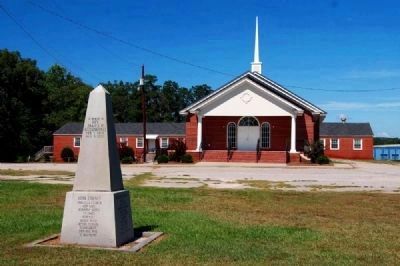
Celebrating Black History Month
This Black History Month, MetroConnects would like to pay homage to the many African Americans of Greenville County whose services and talents have had a lasting impact on the culture, politics and social institutions of the upstate. Each week this month, we will highlight community members of the past and present, celebrating their achievements and remembering their struggles. This week, we will start with two Greenville who were foundational in establishing Greenville’s Black churches: the Reverends James R. Rosemond and Gabriel Poole.
Rev. James R. Rosemond’s Beginnings
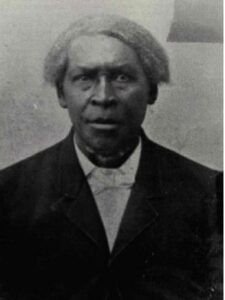
Rev. Rosemond was born in 1820 in Greenville, enslaved to Waddy Thompson, Jr., who was a U.S. Representative from 1826 to 1829. Rosemond’s parents were Abraham and Peggy, also both “owned” by Thompson. As was sadly quite common, Rosemond was separated from his parents when he was only six years old and they were “given” — as a wedding gift — to one of Thompson’s sons, who brought them to Alabama. Rosemond was subsequently sold to Vardry McBee, the largest landowner and entrepreneur in the Greenville area. James, who previously went simply by “Jim,” was given the last name “McBee” for the time period in which he was enslaved by the McBee family. He lived with a Methodist family, and they had him baptized in 1844. Rosemond quickly found his calling. In 1845, he was appointed class leader in the Greenville Methodist Church, and later an exhorter. In 1851, Rosemond was given permission to travel with Rev. Poole, who was by then a Baptist minister. In 1854, Osgood A. Darby, a pastor of the Greenville Methodist Church, recommended Jim as a “Colored preacher,” and he delivered his first sermon at Salem Church. He later began to preach at Sharon Church in Anderson.
Despite his successes and devotion to the church, the McBee family still viewed Rosemond as simply a piece of property. Roseman’s congregation raised $500 to purchase his freedom, but Rosemond’s “owners” refused to sell for anything less than $800. Rev. Rosemond remained enslaved until the end of the Civil War, when he was freed by the Emancipation Proclamation in 1865.
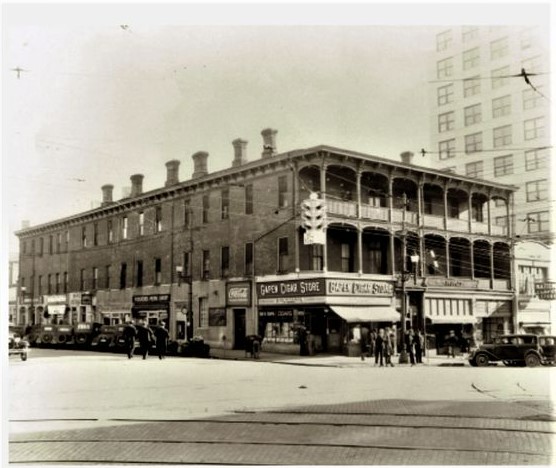
After Emancipation
After emancipation, Rev. Rosemond shed the McBee name and took the name “Rosemond” in its place. From this moment forward, he dedicated himself to establishing Black Methodist congregations throughout the upstate. He gathered a group of fellow Methodists — Frank Williamson, Wilson Cooke, Alexander Maxwell and Wiley Pool, and together they established a congregation that met at the Greenville Methodist Church, paying the church trustees $100 annually to use the space. In 1866, Charles Hopkins, a Black missionary from the northern Methodist Episcopal Church, established a school at the Goodlett House, which was on the corner of S. Main Street and E. Washington, through the Freedman’s Bureau, and the congregation moved there. At the same time, the congregation purchased a lot at what is now 101 E. Court Street in downtown Greenville from Alexander McBee. In1969, the new Silver Hill Church was constructed, and Rev. Rosemond, who had been ordained a deacon, moved his congregation there. The church, which was later renamed John Wesley UMC, had seating for 500 people and held three services every Sunday and a prayer meeting on Thursdays. Today, the John Wesley United Methodist Church remains active as the oldest historically Black United Methodist Church in Greenville County.
Spreading the Word
After Rev. Rosemond opened Silver Hill Church, he began to set his sights elsewhere. He first opened St. Matthew Church, where he is now buried, near Chicle Springs, and then St. Mark near Travelers Rest, where a camp meeting was held every year. By the time he passed away in 1902, Rev. Rosemond had established 50 churches in the upstate, from York to Oconee counties.
Rev. Gabriel Poole and the Black Baptist Church
Less is known about Rev. Gabriel Poole, who was also enslaved, and “owned” by a family named Cleveland. It is clear, however, that he, too, was instrumental in establishing Black churches in Greenville County. Church records show that enslaved people were joining the Baptist Church by the late 1700s. In 1842, Black enslaved people had joined the Greenville Baptist Church, and Rev. Poole was chosen to assist “Isaac, a servant of Dr. Thos. B. Williams” in overseeing Black members of the congregation and to serve them communion (see Historical Marker). The church at first refused a Black member a license to preach, but it granted one to Rev. Poole on Oct. 24, 1847.
Relations between Black and white members of the congregation seemed to deteriorate after the Civil War, with the congregation still referring to the Black members as “slaves.” In May 1867 Gabriel Poole was ordained “a regular Minister by the Elders of the Greenville Baptist Church.” Nearly a year later, 65 Black members of the church, including Rev. Poole, requested to establish a separate congregation. The congregation grew and was allowed to meet in the basement of the Greenville Baptist Church, holding services every Friday evening and Sunday afternoon. In September 1871, the Black congregation moved to the new Springfield Baptist Church and held its first service. By October 1875, the Springfield Baptist Church had about five hundred members.
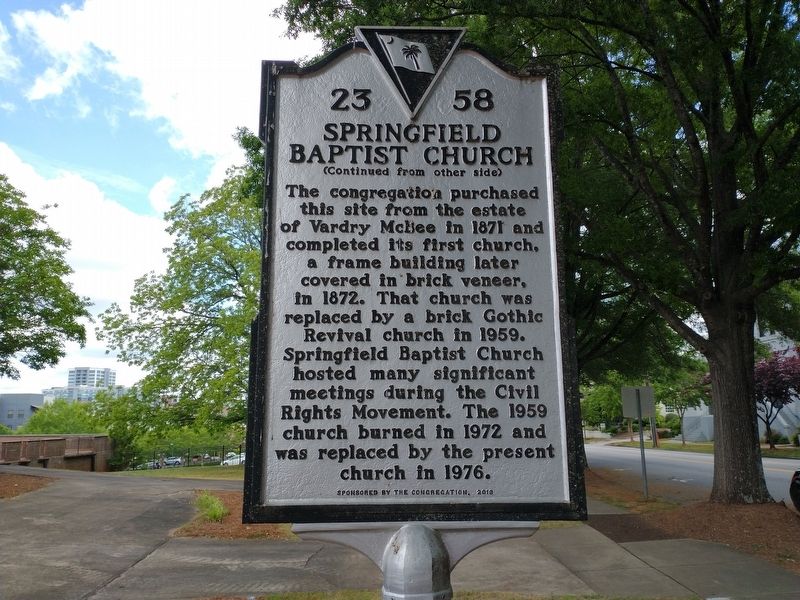
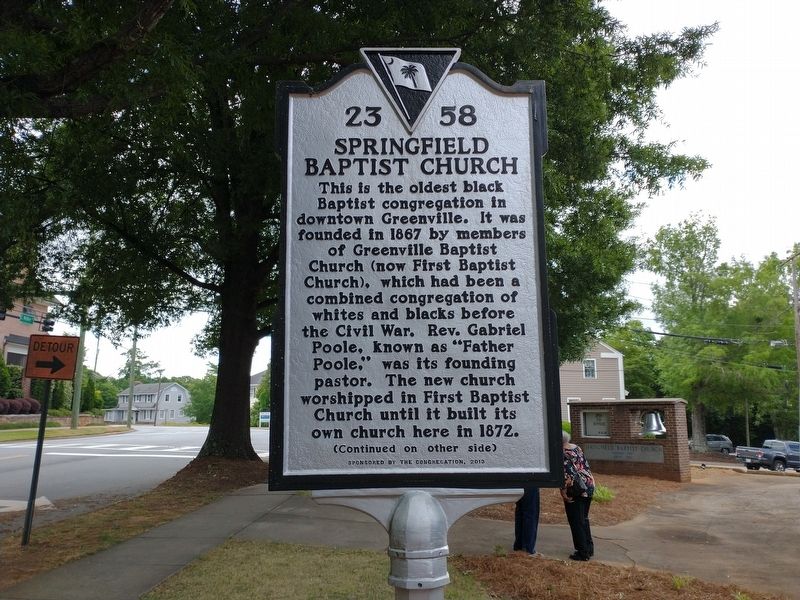
A Civil Rights Landmark
The church remained significant through the Civil Rights movement, providing a meeting place for the NAACP and an organizing space for activists. It was from the steps of the church that Jackie Robinson led a peaceful march to the downtown Greenville Airport, where he had been denied entry to the waiting room, in 1960. A few months later, seven students planned a sit in at the Greenville Library. And church member A.J. Wittenberg filed the lawsuit in 1963 that would eventually lead to desegregation of Greenville County schools. In 2018, the church was named part of the Civil Rights Trail, the only such landmark in Greenville County. It remains active as the oldest Black Baptist congregation today.
Sign up for the MetroConnects newsletter to stay up-to-date on our posts!